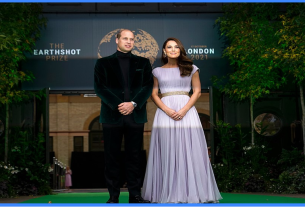In this new series, The Applied Ecologist is amplifying the staff and student voices from the University of Surrey’s Centre for Environment and Sustainability to showcase their diverse, interdisciplinary body of work and to help inspire the next generation.
In this post, we share below recent research by Tara Pirie from the School of Biosciences and collaborates with the Centre for Environment and Sustainability.
Meet Tara Pirie
I am a lecturer in ecology and conservation at the University of Surrey.
What are you working on right now?
At present I am working with ecology and dissertation students to monitor biodiversity and hedgehogs on University of Surrey campuses and within the local community. These are important green spaces within an urbanised landscape which historically have been manicured to be aesthetically pleasing but are more recently now being managed for biodiversity.
My past research at the University of Reading was investigating an animal that is a global threat to biodiversity, the domestic cat. Much of the research had been conducted on cats within an urban and sub-urban setting in the UK but we wanted to understand the potential impact on wildlife in green spaces. We tracked 79 individual cats living in suburban areas of Berkshire and Hampshire, UK to compare cats living next to green areas with those surrounded by houses. We investigated if there were any differences in how far they travelled, what they hunted and where they hunted.
We found that cats living next to green habitats roamed further (with an average of 1.7 times larger ranges) and returned more prey (an average of 2.4 times more) than their counter parts. While bird predation rates did not differ, this difference was driven by cats living next to green areas returning more mammals than cats surrounded by houses. We also found cats living next to natural areas entered these areas on average by 65m (with some travelling over 300m in) making up on average 25% of their range.

Who are you working with in the Centre?
In CES, I collaborate a lot with its members, especially Zoe Harris and Sophie Tudge.
Why is this project important?
The combination of large numbers (in the UK alone there are an estimated 11 million cats) and their ability to hunt makes the domestic cat one of the most invasive species globally. From our research the average amount of prey returned was 5 animals ± 1 per cat per year, however cats may only return 23% of what they catch so this could equate to 22 ± 4 animals per cat per year. This may not sound like a lot but if multiplied by the 11million cats in the UK…this could be taking a toll on some of the declining species. The potential removal of animals in large numbers by cats could have a negative impact on other wildlife such as tawny owls that rely on woodmice and other small rodents to survive. The mere presence of a predator can also disrupt feeding and nesting to the detriment of young and adults too which can further contribute to declining numbers.
What are the future implications of your research project?
We are only really starting to understand how important biodiversity is for the stability and resilience of the world especially towards climate change. Understanding potential threats and monitoring local efforts to improve biodiversity can help inform everyone of what the issues are and what could be done to improve it. Perhaps people could be encouraged to leave their lawn during “no mow may” as the Estates team do now, or to provide safe havens for hedgehogs to help boost declining numbers, or to consider keeping their cat in for a few weeks during spring to give birds and small mammals a chance to breed. If everyone can be encouraged to change a little, we could collectively change a lot to help sustain the world we live in.

For more information
Link to the paper:


